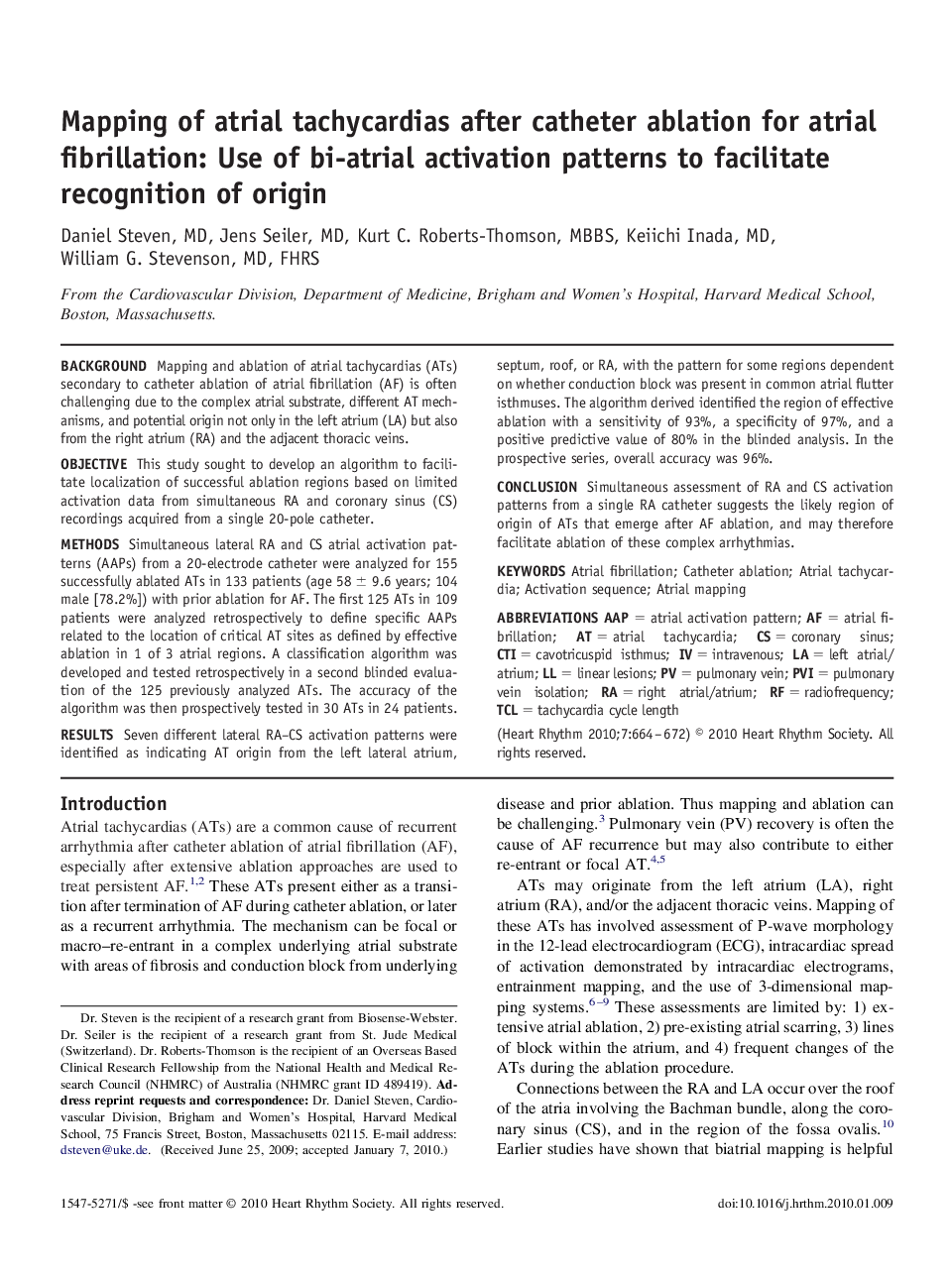| کد مقاله | کد نشریه | سال انتشار | مقاله انگلیسی | نسخه تمام متن |
|---|---|---|---|---|
| 2924139 | 1175895 | 2010 | 9 صفحه PDF | دانلود رایگان |

BackgroundMapping and ablation of atrial tachycardias (ATs) secondary to catheter ablation of atrial fibrillation (AF) is often challenging due to the complex atrial substrate, different AT mechanisms, and potential origin not only in the left atrium (LA) but also from the right atrium (RA) and the adjacent thoracic veins.ObjectiveThis study sought to develop an algorithm to facilitate localization of successful ablation regions based on limited activation data from simultaneous RA and coronary sinus (CS) recordings acquired from a single 20-pole catheter.MethodsSimultaneous lateral RA and CS atrial activation patterns (AAPs) from a 20-electrode catheter were analyzed for 155 successfully ablated ATs in 133 patients (age 58 ± 9.6 years; 104 male [78.2%]) with prior ablation for AF. The first 125 ATs in 109 patients were analyzed retrospectively to define specific AAPs related to the location of critical AT sites as defined by effective ablation in 1 of 3 atrial regions. A classification algorithm was developed and tested retrospectively in a second blinded evaluation of the 125 previously analyzed ATs. The accuracy of the algorithm was then prospectively tested in 30 ATs in 24 patients.ResultsSeven different lateral RA–CS activation patterns were identified as indicating AT origin from the left lateral atrium, septum, roof, or RA, with the pattern for some regions dependent on whether conduction block was present in common atrial flutter isthmuses. The algorithm derived identified the region of effective ablation with a sensitivity of 93%, a specificity of 97%, and a positive predictive value of 80% in the blinded analysis. In the prospective series, overall accuracy was 96%.ConclusionSimultaneous assessment of RA and CS activation patterns from a single RA catheter suggests the likely region of origin of ATs that emerge after AF ablation, and may therefore facilitate ablation of these complex arrhythmias.
Journal: Heart Rhythm - Volume 7, Issue 5, May 2010, Pages 664–672